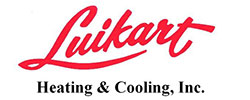
You shouldn’t need to give up comfort or drain your wallet to keep your home at a pleasant temperature during summer weather.
But what is the ideal temperature, exactly? We discuss ideas from energy professionals so you can choose the best temp for your loved ones.
Here’s what we suggest for the most energy-efficient setting for air conditioning in Newark.
Recommended Thermostat Settings for Summer
Most people find placing the thermostat at 72-73 degrees is most comfortable. However, if there’s a huge difference between your inside and outside temperatures, your utility expenses will be greater.
These are our suggestions based on the U.S. Department of Energy (DOE) and ENERGY STAR®.
While at home: 78 degrees. While that sounds too high, there are approaches you can keep your home cool without having the air conditioner running frequently.
Keeping windows and curtains closed during the day keeps cool air where it belongs—inside. Some window solutions, like honeycomb shades or plantation shutters, are designed to give more insulation and enhanced energy conservation.
If you have ceiling fans in your home, the DOE says you can move thermostat temps about 4 degrees warmer without compromising comfort. That’s since they refresh through a windchill effect. Because they cool people, not rooms, turn them off when you leave a room.
If 78 degrees still appears too uncomfortable at first glance, try doing a trial for approximately a week. Start by increasing your setting to 78 degrees while you’re at your residence. Then, progressively lower it while using the ideas above. You may be amazed at how comfortable you feel at a warmer temperature setting.
While away: 88 degrees. There’s no need to keep the AC going all day while your residence is unoccupied. Moving the temp 7–10 degrees higher can save you as much as 5–15% on your electricity bills, according to the DOE.
When you arrive home, don’t be tempted to set your thermostat under 78 to cool your house more quickly. This isn’t effective and often produces a more expensive electricity cost.
A programmable thermostat is a good approach to keep your settings under control, but you have to set programs. If you don’t utilize programs, you risk forgetting to change the set temperature when you leave.
If you want a convenient remedy, consider installing a smart thermostat. This thermostat works with with your phone, so it realizes when you’re at your residence and when you’re away. Then it automatically adjusts temperature settings for the best savings. How much exactly? Usually $180 each year on heating and cooling, according to ENERGY STAR.
Another perk of installing a smart thermostat? You can use your phone to watch and regulate temperature settings from almost anywhere.
While sleeping: Around 70 degrees. While ENERGY STAR suggests 82 degrees, that might be too uncomfortable for many families. The majority of people sleep better when their bedroom is cold, so that’s why the National Sleep Foundation suggests 60–67 degrees. But that may be too chilly, depending on your PJ and blanket preference.
We recommend using a comparable test over a week, setting your temperature higher and gradually decreasing it to select the ideal temp for your house. On pleasant nights, you may discover keeping windows open at night and running a ceiling fan is a preferable option than using the air conditioning.
More Methods to Save Energy During Hot Weather
There are extra methods you can conserve money on cooling bills throughout the summer.
- Install an energy-efficient cooling system. Central air conditioners only work for about 12–15 years and get less efficient as they age. A new air conditioner can keep your home cooler while keeping energy costs small.
- Book yearly air conditioner tune-ups. Annual air conditioner maintenance keeps your system running properly and might help it work at greater efficiency. It may also help prolong its life expectancy, since it helps professionals to pinpoint small problems before they create a major meltdown.
- Replace air filters regularly. Read manufacturer instructions for switching your air filter. A clogged filter can result in your system short cycling, or turn on and off too often, and raise your electricity.
- Measure attic insulation levels. Almost 90% of houses in the USA don’t have enough insulation, according to the Insulation Institute. The majority of southern climates should have 13–14” of attic insulation, while northern climates require 16–18”.
- Have your ductwork examined. Ductwork that has separated over time can seep conditioned air into your attic, walls or crawl space. This can result in big comfort troubles in your residence, like hot and cold spots.
- Seal holes, doors and windows. Keep hot air in its place by plugging openings. You can also caulk or weather strip doors to keep more conditioned air inside.
Conserve More Energy During Hot Weather with Luikart Heating & Cooling
If you are looking to save more energy during hot weather, our Luikart Heating & Cooling professionals can assist you. Give us a call at 740-344-5497 or contact us online for extra info about our energy-saving cooling solutions.
